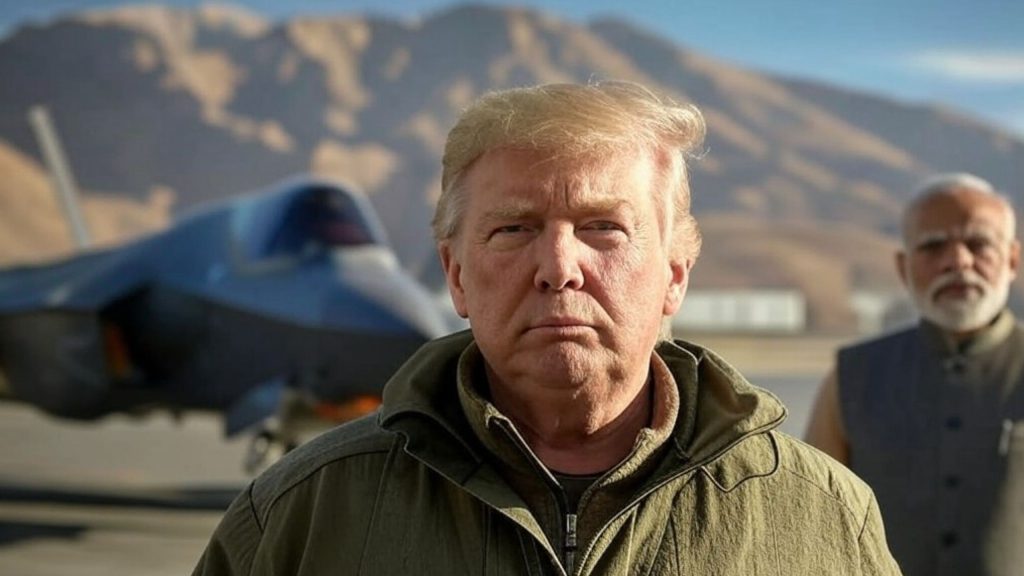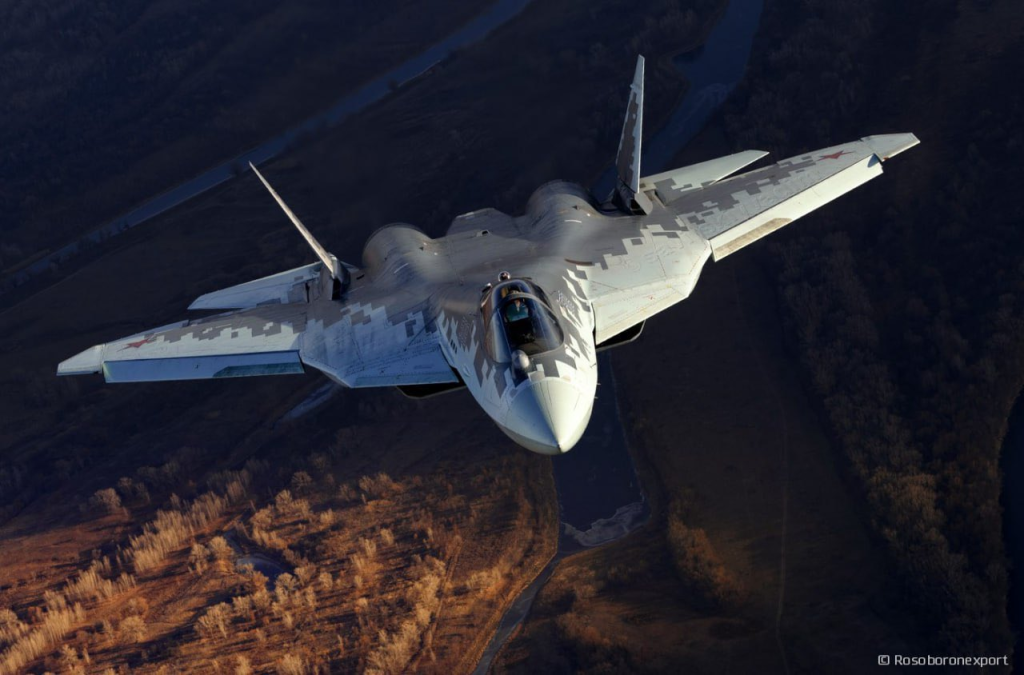
Is President Donald Trump about to make ‘F-35 for India’ his new flagship project in the India-U.S. defence trade space? The new American President’s recent insistence on India significantly increasing its procurement of U.S. security equipment in his opening conversation with Indian Prime Minister Narendra Modi is fueling escalating conjecture about what his next big weapons push could be. Among the various possibilities, the Lockheed Martin F-35 Lightning II has emerged as the most tantalizing prospect, an aircraft long viewed as a distant lure for the Indian Air Force (IAF). Given Trump’s track record of disruptive diplomacy, he could well cut through the ambiguity and explicitly put the F-35 on the table, persuading India to scrap the drawn-out Multi-Role Fighter Aircraft (MRFA) contest where the American F-15EX Eagle II faces off against the French Rafale, and theoretically, other fighter contenders including the Lockheed Martin F-21, Europe’s Typhoon, Sweden’s Gripen E, and Russia’s MiG-35 and Su-35.
Trump’s Playbook: Breaking Through Diplomatic Formalities
The MRFA program, which seeks to procure 114 multi-role fighters for the IAF, has been in the works for years, with no clear resolution in sight. Amid ambiguity, a recently appointed committee led by the Indian Defence Secretary now seeks to provide a clear roadmap on the MRFA and other procurement priorities aimed at bolstering the IAF’s combat aircraft strength. This committee’s mandate includes evaluating strategic requirements, budgetary constraints, and technological imperatives to ensure a balanced approach between foreign acquisitions and domestic development. With India at a critical juncture in its airpower evolution, the committee’s recommendations could play a decisive role in shaping the trajectory of the MRFA program and determining whether imports will continue to aggressively fit into India’s long-term defence framework. While the F-35 has always been seen as a long-term prospect for India rather than an immediate procurement priority, Trump’s transactional approach to diplomacy could upend this status quo.
Few know or remember that the F-35 was officially pitched to the Indian Navy in 2010 in response to a request for information (RFI) for a generation carrier-based figher. Lockheed Martin had pitched both the STOVL F-35B and the carrier variant F-35C. You can read about that pitch in our 2010 piece here.
Trump has never shied away from directly marketing American military hardware to allies and partners. His presidency saw aggressive pitches for U.S. weapon systems even to countries hesitant about major arms purchases. But right off the bat, Trump has made it clear that he seeks to ramp up U.S.-India defence trade even further, that the defence trade will be a tentpole in the relationship. In that context, the F-35 would seem to be the obvious offering according a several experts watching this space. By doing so, Trump may well attempt to persuade India to bypass the MRFA contest entirely, accelerating a decision that has long been mired in planning inertia.
Implications for India’s Domestic Fighter Programs
To be clear, an explicit F-35 offer from Trump would carry serious consequences for India’s indigenous fighter development programs, particularly the Advanced Medium Combat Aircraft (AMCA) and the Tejas Mk2. The AMCA, India’s ambitious stealth fighter project, aims to enter production by the early 2030s, while the Tejas Mk2 is expected to modernize the IAF’s light fighter fleet. The introduction of the F-35 into India’s inventory would provide quick fifth-generation capabilities but would significantly delay, if not outright jeopardize, the AMCA program due to its high costs and long development timeline. Acknowledging this 15 years ago, India had decided it would commit to fifth generation tech in-house and not consider importing from the outside.
Given India’s already limited defence budget, a Trump-backed F-35 acquisition could force New Delhi into making difficult trade-offs, potentially sidelining its domestic fighter aspirations in favor of a combat-proven, off-the-shelf stealth solution. If Trump does plan to action an F-35 for India campaign, he would likely leverage the idea of a vastly changed world, significantly altered geopolitical alignments and India’s increased responsibilities in the region.
India’s Strategic Calculus: The China and Russia Factor
India’s hesitation to even consider the F-35 has long been rooted in legitimate concerns over operational sovereignty, implications for homegrown projects, logistical complexities, and cost. Trump’s advisors and the Pentagon may be hoping that recent developments in China’s fighter jet capabilities may be shifting India’s perspective. The People’s Liberation Army Air Force (PLAAF) has made notable advancements in stealth technology, with the Chengdu J-20 already in service and additional next-generation fighters in development. This perceived combat aircraft disparity with China may push India to reconsider its reluctance toward acquiring an advanced stealth platform like the F-35, is what the Trump Administration may be counting on. There is no reason to believe that India’s mind will change on this front.
India’s acquisition of the S-400 is commonly cited as a reason why the F-35 can never seriously be offered to India. But experts agree that’s an oversimplified way of looking at the multi-layered strategic relationship India already has with both the U.S. and Russia. While it is true that assets like F-35 represent the highest level of U.S. tech, Indian arsenals are unique in how they deploy American and Russian equipment cheek by jowl in multiple operational scenarios.

Additionally, Russia has become increasingly vocal about offering its Su-57 stealth fighter to the IAF, a move that may further incentivise the U.S. to proactively push the F-35. Trump, ever keen to counter Russian influence, could use the Su-57 pitch as leverage to convince India that the F-35 is the superior choice, reinforcing Washington’s broader strategic aim of reducing New Delhi’s reliance on Moscow for defence procurements.

A Trumpian F-35 Push: The Road Ahead
There are concerns now that Trump’s brand of deal-focused politics could force a paradigm shift in India’s fighter procurement strategy. By potentially positioning the F-35 as an immediate offering rather than a distant possibility, the concern is he may turn the heat up on Indian decision-makers to abandon the MRFA contest and directly opt for fifth-generation airpower. A looming trade or tariff battle means Trump may already be signaling to India that he has played his first card.
It must be said, however, that despite a veritable parade of American-built military aircraft in Indian service — C-17 and C-130J transport aircraft, P-8I maritime surveillance and submarine hunters, Chinook heavylift rotorcraft, Apache attack helicopters and, most recently, MH-60R ‘Romeo’ naval helicopters — successive Indian governments have resisted the induction of American-built frontline fighter aircraft. India’s choices could be explained away with field trials and technical selection process, but from the M-MRCA to the Indian Navy’s deck-based fighter requirements, successive Indian governments have conspicuously avoided American-built fighter aircraft. In a universe where big defence procurements are at least as much political as they are in pursuance of capability, India’s decisions were, and are, loud and clear. Any shift in this stance would come with its own set of challenges, from political to operational to logistical with direct potential ripple effects on indigenous defence initiatives.
Livefist’s own view on this has been consistent: India’s decision to pursue a homegrown stealth fighter needs to be a relentless focus with an ‘all industry’ approach. And that importing a stealth fighter, even if it involved industrial and other benefits, must be avoided at all costs. The energies involved must be poured into ensuring the AMCA and other local projects are on the fast-track.
But Indian planners will be wargaming the unpredictable and renewed aggression of Trump 2.0. Ultimately, whether Trump actually does unveil an F-35 pitch remains to be seen. Whether India even considers such a conversation would depend on its long-term strategic priorities: balancing rapid capability enhancement against self-reliance in defence manufacturing. If Trump indeed makes the F-35 the centrepiece of his India conversation, it could mark the most consequential shift in India’s airpower trajectory in decades—one that could reshape the balance of power in the Indo-Pacific for years to come.

Even I was an opponent of importing 5th Gen fighters. However, given current realities, an off the shelf G2G deal for 4 squadrons of F-35A would definitely ease the pressure on the AMCA and Tejas Mk2, without leaving a gaping hole in our defensive capabilities. Modiji and Nirmala Tai would have to arrange for the monies to ensure AMCA and Tejas Mk2 doesn’t suffer.
India will have to import…. We just cant leave a technology gap so large… secondly I have followed the tejas programme from 2003 onwards… even today it is hardly a finished product…. Imagine AMCA … which needs so many complex technologies… most of all we need to increase our capiltal outlay…. There is no other way
India should never buy f35
Considering the extremely poorly managed Indian aircraft programs with absolutely no foresight, we are now forced to purchase 5th gen aircraft.
Step1 – Sign the engine development deal with Safran asap, set aggressive deadlines and massive penalties for delays or defaults.
Step2 – Qualify Eurojet for Tejas Mk1A, Tejas Mk2 and AMCA. If required a special variant to be partly funded by India with Joint IP. Make sure both engines are used 50/50 for production of aircraft.
Step3 – MRFA – maybe we may order 50% Rafale and 50% F15EX. and force quick delivery for both. ordering 60 aircraft for each is a significant quantity. maybe enough to start the ball rolling on part indian supply chain.
Step4 – Order off-the-shelf 5th Gen aircraft either F35 (with F35I spec) or Su57.
Step5 – If possible procure lock-stock & barrel entire design for Su75 along with Al51 engine. Not just to manufacture in India, but to deeply integrate Indian systems and enhance.
Final note: The bureaucrats over past 2 decades constrained and mostly made Indian weapons programs toothless. Investigate malicious intent and prosecute few culprits on ‘Treason’ charges to set example for entire Bureaucrats & others involved (within & outside armed forces). No longer should malicious intent, inordinate delays, slow decision making be tolerated when it comes to national security and defence forces.
Considering the extremely poorly managed Indian aircraft programs with absolutely no foresight, we are now forced to purchase 5th gen aircraft.
Step1 – Sign the engine development deal with Safran asap, set aggressive deadlines and massive penalties for delays or defaults.
Step2 – Qualify Eurojet for Tejas Mk1A, Tejas Mk2 and AMCA. If required a special variant to be partly funded by India with Joint IP. Make sure both engines are used 50/50 for production of aircraft.
Step3 – MRFA – maybe we may order 50% Rafale and 50% F15EX. and force quick delivery for both. ordering 60 aircraft for each is a significant quantity. maybe enough to start the ball rolling on part indian supply chain.
Step4 – Order off-the-shelf 5th Gen aircraft either F35 (with F35I spec) or Su57.
Step5 – If possible procure lock-stock & barrel entire design for Su75 along with Al51 engine. Not just to manufacture in India, but to deeply integrate Indian systems and enhance.